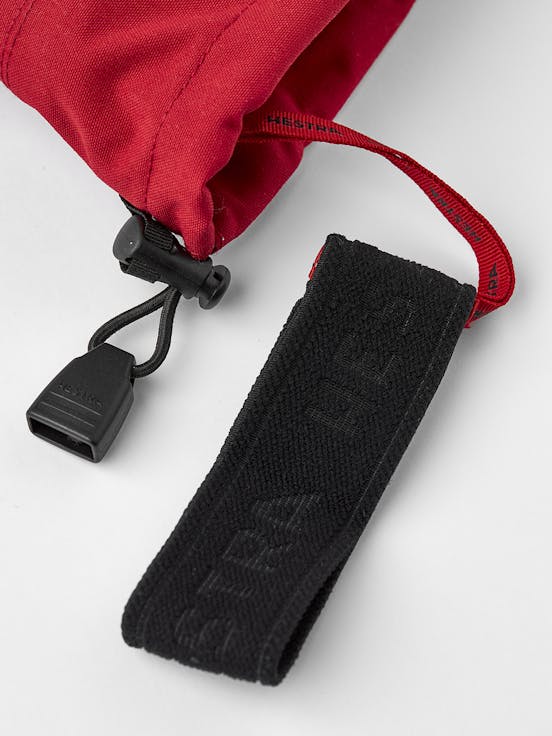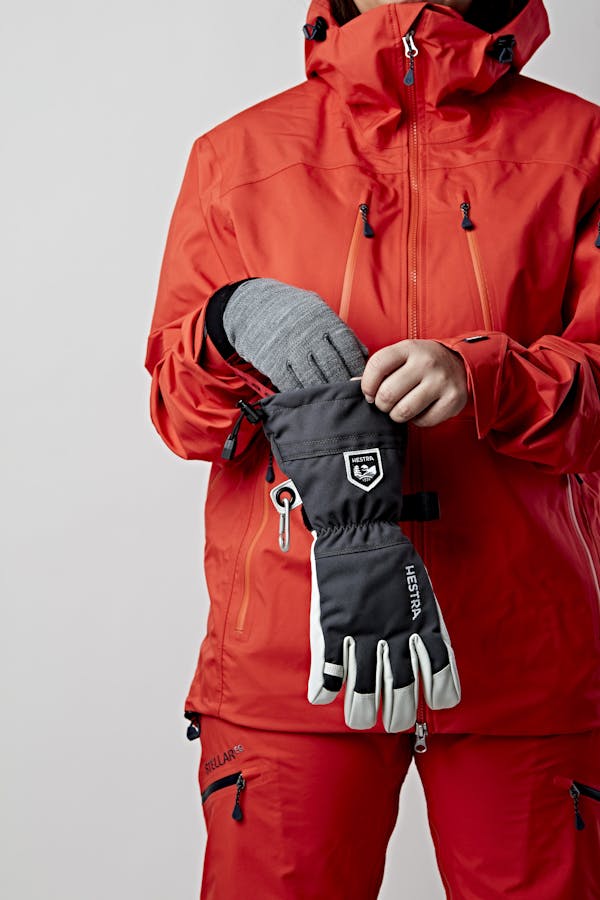

quickshop
Army Leather Heli Ski 5-finger
150 EUR
ColorRed
SizeSelect size
Order by December 10 for delivery before Christmas.
We offer an extended right of return until 31/1-26.
You can keep your hands dry and warm by combining gloves with different features. The Hestra glove system is based on the layering principle - by using layers of gloves, you can regulate the temperature according to the weather conditions and your activity level.
Closest to your skin, wear a liner that carries away moisture and creates a thin, warming layer. You should keep it on to avoid contact with cold surfaces when performing tasks that require finger dexterity.
A thin liner worn inside a glove increases heat by about 20 percent.
The base glove is the one you use most frequently. It keeps your hands warm in normal cold conditions, wicks away the moisture and provides protection against windy and wet weather conditions. The base glove is available with a fixed or removable liner. A removable liner makes it easier to regulate the temperature.
Shell gloves are a layer of added protection that you pull on when it's biting cold, wet or if you're standing still for prolonged periods. This creates another layer of air that insulates against the cold. Adding a liner and shell glove increases heat by approximately 50 percent compared to only wearing a base glove.
A shell glove doesn't take up much space and can easily be rolled up for easy storage and access.
There are many combinations – select models based on your needs and the activities and weather conditions you expect to encounter.
Use thin liners when better dexterity is needed. During activity your body temperature rises, but the wind can still chill your hands. Use a windproof base glove that is highly breathable. Remember, gloves with waterproof inserts like GORE-TEX and CZone may limit the ventilation. When you stop to rest you need more insulation then when you are moving - add a shell glove on top of your base glove.
Heart before hands
Hands and feet are the first body parts to suffer when you are out in the cold. They are furthest from the vitals in the core of your body - your heart, brain spinal cord and gastrointestinal tract. The fine mesh of capillaries in the fingers and toes is shut off when it gets too cold and the tips of your fingers turn white. You could say that the body \"sacrifices\" less important parts in an attempt to save the organs that are essential for survival. The point is that your hands and feet need extra protection when it's cold to compensate for the body's natural function. Remember that even if your body is warm in general, your hands can still get frostbite.


